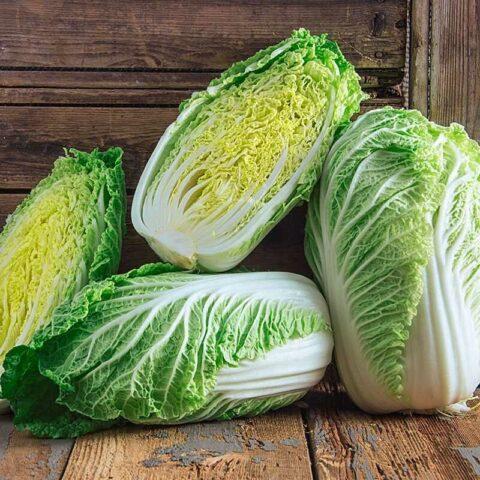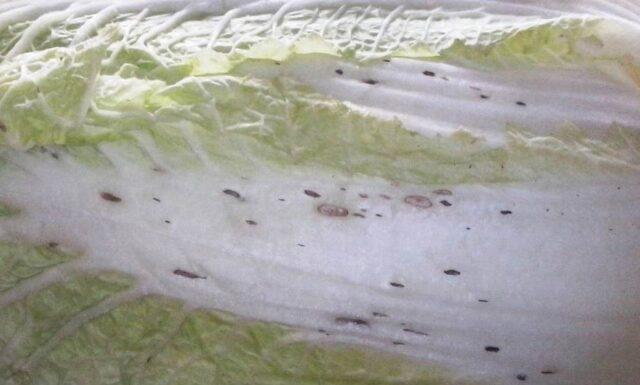Content
Every housewife who values preparations needs to know how to freeze Chinese cabbage. This method of preserving the product has its advantages and disadvantages, therefore, in order to get the maximum benefit from the vegetable, you need to know the nuances of the procedure.
Is Chinese cabbage frozen?
Previously it was believed that this vegetable should not be processed at low temperatures. But with the advent of a large number of recipes for Chinese cabbage, freezing has become a relevant method of preserving cabbage for the winter. This method is also popular for housewives because it saves money: in winter, the price of vegetables increases sharply.
It should be borne in mind that proper freezing allows you to preserve valuable vitamins and microelements in the product. Under the influence of low temperatures, the unique properties of Chinese cabbage are manifested as follows:
- removal of excess mucus and undigested food debris from the human intestines;
- normalization of the coagulation system;
- improved night vision due to the presence of vitamin K and retinol in the leaves;
- strengthening the skeletal system;
- elimination of disorders of the digestive tract;
- help for depression;
- elimination of headaches.
Frequent consumption of Chinese cabbage will also promote weight loss. Women note improvements in the condition of hair, nails, and tooth enamel.

All properties of Chinese cabbage are preserved after freezing if all manipulations with the vegetable are performed correctly.
Cabbage selection
When purchasing a fork, you should pay attention to its appearance. For freezing, you need mature, dense heads of cabbage that have no signs of disease or damage. There is no mold or mucus on the leaves; they should be soft greenish in color, dense, and pleasant to the touch. There is a yellowish color inside the head.
If you take into account varietal characteristics, then mid- or late-ripening species are suitable for freezing.
Early ripening Chinese cabbage has a very delicate leaf structure and a short growing season, so the freshness of the product cannot be preserved for more than a week. As a result of freezing, the moisture-rich fibers of the fork soften and lose their appearance and taste.

The only possible way for long-term storage of early-ripening Beijing cabbage is preservation.
To distinguish late ripening varieties, it is enough to examine them. They have a dense head, tolerate transportation well and are perfectly stored. In most regions, they begin to be cut in August-October, so it is recommended to postpone freezing until this period.
In total, more than 50 varieties are registered that can be stored for a long time:
- Turquoise and Mojito (up to four months);
- Orange Sun and Nika (up to three months);
- Spring Beauty, Tenderness, Taranko, Miss China, Shanghai and Philippok (just a few weeks).
Preparing cabbage for freezing
This step is mandatory. The head of cabbage must be cut evenly and the outer leaf plates must be torn off.If at the end of the procedure it turns out that there are long stalks left, remove them, as they are unsuitable for food and cannot be frozen.
The collected pieces should be washed thoroughly, carefully examining the leaves. Small insects love to settle in them, which will spoil the taste of Chinese cabbage when frozen.

Small black dots are a viral mosaic; when they appear, the vegetable cannot be collected for storage for the winter
The last stage of working with Chinese cabbage is soaking the leaves. To do this, you need to dissolve 5 tsp in 3 liters of clean water. table salt. This procedure allows you to eliminate larvae if they are present. To prevent the forks from floating, they need to be covered with a lid or plate. After 20-30 minutes, drain the water and place the heads of cabbage in a colander.
How to properly freeze Chinese cabbage for the winter
The choice of method depends on the preferences of the housewife and the final goal. For most women, the important criterion is speed and minimum effort. But you need to take into account that the appearance of the finished dish will depend on the freezing method.
Entirely
This method is one of the less labor-intensive. The whole head of cabbage should be soaked in salted water, having previously separated the outer leaves. Then remove the vegetable and leave it to dry on a towel. To freeze, place Chinese cabbage in a plastic bag or plastic container. Transfer the preparations to the freezer and leave there for a day.

The ideal option for packaging Chinese cabbage before freezing is cling film
Cut into strips
This method has a number of advantages:
- the final product can be baked, stewed or boiled;
- the vegetable can be stored compactly in the freezer;
- While cutting, you can examine the leaves for insects or signs of disease.
To freeze into strips, Chinese cabbage should be chopped. Then there are several storage options: put the chopped vegetable in a bag and put it in the freezer. But it should be borne in mind that the straw will be a single monolith, and it can only be used for cooking or stewing.
The second option is to freeze the straws on a board. Thus, the chopped leaves do not stick together; they can be added as a filling to pies, fried, or baked.

A guarantee of a good result when freezing into strips is a sharp knife and the absence of moisture when slicing, as well as a reasonable portion size
For cabbage rolls
Thrifty housewives use this method to save time when cooking in winter. Before freezing, separate the cabbage into leaves and then pour boiling water over them to soften them. Place the blanks in portions into a bag. Once the Chinese cabbage has thawed, it can be easily bent to enclose the filling.
Terms and conditions of storage
The maximum amount of nutrients is retained in properly frozen vegetables. The temperature in the freezer should be -18 °C. It is not recommended to place Chinese cabbage next to fish or other products that have pronounced specific aromas.

The optimal shelf life of vegetables is 6-9 months.
How to defrost correctly
The choice of method depends on the further preparation of Chinese cabbage, which has been frozen.If you plan to have a salad or cabbage rolls, then the container with the leaves needs to be taken out of the freezer and placed in the refrigerator, where it should be left for a day. After the time has passed, drain the water from the container and use the Chinese cabbage for its intended purpose.
Another option is defrosting at room temperature. But you need to take into account that the appearance and taste of such a product changes. Also, for soups and frying, you can simply not defrost Chinese cabbage, but immediately heat treat it.
Conclusion
You don't need any unusual skills to freeze Chinese cabbage. The housewife will need a colander, a knife, a cutting board, water and a freezer. The choice of freezing method depends on personal preference. And so that the preparation does not lose its appearance and taste, it must be used correctly.








